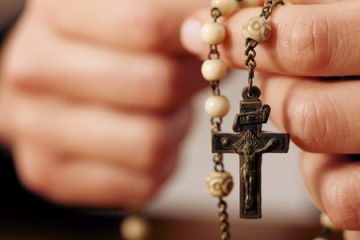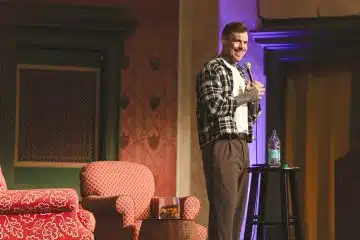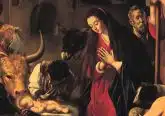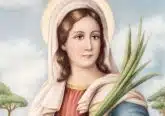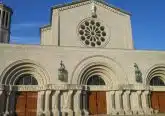Saint Sebastian
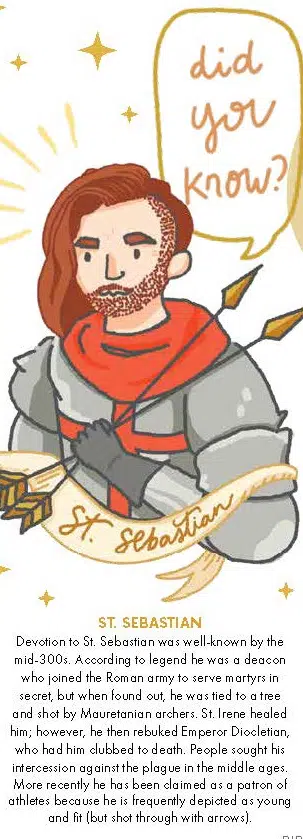 Written by Gail Finke Illustrated by Emma Cassani
Written by Gail Finke Illustrated by Emma Cassani
1852
St. Sebastian parish formed for German-speaking parishioners of St. Rose and St. John the Baptist parishes. Traveling Precious Blood Fathers celebrated Mass.
1853
Temporary church built. The name was proposed by the oldest parishioner, Sebastian Schraner.
1879
Brick church, designed by Anton DeCurtins, built.
1894
Parishioners from Chickasaw (a mile and a half away) wished to form a separate parish, built their own hall, designated it a “chapel of ease” for people who could not travel.
1903
Following years of infighting between three factions, St. Sebastian Church burned to the ground a week before its golden jubilee. Foul play suspected.
1904
Chickasaw and Montezuma split from the parish. St. Sebastian rebuilt on the original site by Andrew DeCurtins (son of the original architect) from red-pressed brick in Gothic Revival style.
1906
Three Precious Blood parishes, including St. Sebastian, are ceded to the archdiocese.
1908
Double-pipe organ, by Hann- Wangerin Weickhardt Organ Co. of Milwaukee, dedicated. Pittsburgh industrialist and philanthropist, Andrew Carnegie, donated $1,000 toward the organ’s $2,500 cost.
1979
St. Sebastian Church and rectory added to the National Register of Historic Places, along with more than 30 properties associated with the Society of the Precious Blood.
1 steeple, making St. Sebastian one of the many churches and related buildings in the 38.4-mile “Land of the Cross-Tipped Churches” Ohio Scenic Byway
2 hearts: The parish holds a First Friday and First Saturday Vigil of Two Hearts (the Sacred Heart of Jesus and Immaculate Heart of Mary)
13 stained-glass windows: 12 vertical windows depict the life of Jesus and several saints, an additional window over the altar depicts St.
Sebastian (additional windows are floral)
“During the daylight hours, especially when the sun is shining, five long stained- glass windows on each side are the most beautiful
colors and the light inside the church is incredible.”
– Deacon Steven Broering
This article appeared in the September 2022 edition of The Catholic Telegraph Magazine. For your complimentary subscription, click here.





